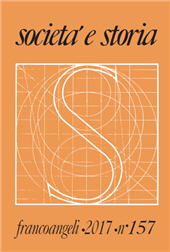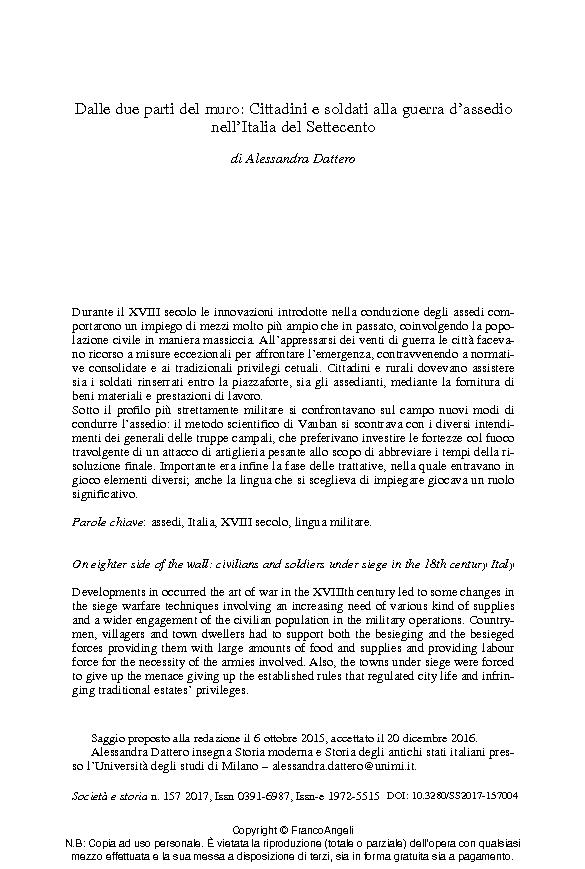Dalle due parti del muro : cittadini e soldati alla guerra d'assedio nell'Italia del Settecento
479-523 p.
Durante il XVIII secolo le innovazioni introdotte nella conduzione degli assedi comportarono un impiego di mezzi molto più ampio che in passato, coinvolgendo la popolazione civile in maniera massiccia. All'appressarsi dei venti di guerra le città facevano ricorso a misure eccezionali per affrontare l'emergenza, contravvenendo a normative consolidate e ai tradizionali privilegi cetuali. Cittadini e rurali dovevano assistere sia i soldati rinserrati entro la piazzaforte, sia gli assedianti, mediante la fornitura di beni materiali e prestazioni di lavoro. Sotto il profilo più strettamente militare si confrontavano sul campo nuovi modi di condurre l'assedio: il metodo scientifico di Vauban si scontrava con i diversi intendimenti dei generali delle truppe campali, che preferivano investire le fortezze col fuoco travolgente di un attacco di artiglieria pesante allo scopo di abbreviare i tempi della risoluzione finale. Importante era infine la fase delle trattative, nella quale entravano in gioco elementi diversi; a
nche la lingua che si sceglieva di impiegare giocava un ruolo significativo. [Testo dell'editore].
Developments in occurred the art of war in the XVIIIth century led to some changes in the siege warfare techniques involving an increasing need of various kind of supplies and a wider engagement of the civilian population in the military operations. Countrymen, villagers and town dwellers had to support both the besieging and the besieged forces providing them with large amounts of food and supplies and providing labour force for the necessity of the armies involved. Also, the towns under siege were forced to give up the menace giving up the established rules that regulated city life and infringing traditional estates' privileges. From a military point of view it is interesting to note that in this period the scientific siege method perfected by Vauban in the late XVIIth century was more and more frequently disregarded by field army generals, who preferred to storm the towns relying mainly on artillery firepower and overwhelming odds in order to hasten the capitulation of the fortresses. A special attention.
has to be paid to the negotiations that usually took place during a siege: in this phase several different questions played a key role, for example the choice of the language to be adopted in the talks between the contenders. [Publishers' text].
Ist Teil von
Società e storia : 157, 3, 2017-
Artikel aus derselben Ausgabe (einzeln erhältlich)
-
Informationen
ISSN: 1972-5515
THEMENBEREICHE



